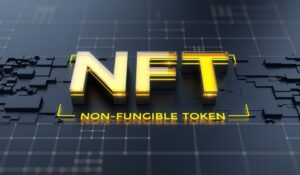NFTs (Non-Fungible-Tokens) have been around for a while. Unfortunately, while many NFT creators create these digital assets for the good of the public and to make money, some people are out there trying to defraud unsuspecting NFT enthusiasts.
Distinguishing a real NFT from a fake one can be challenging because no centralized authority or organization currently verifies the authenticity of NFTs. This statement means that anyone can create and issue an NFT, and it can be challenging for a buyer to verify its authenticity. So, how do we tell apart a real NFT and a fake one? Let us find out.
Verify the Seller
Authentic providers provide accurate information on their websites and social media accounts; Twitter and Discord are the most prominent examples and the prime places to get to know your provider before buying. Double-check the social media accounts and engage with other community members frequently to gauge the legitimacy of the providers.
In addition, it is always prudent to make sure that you visit the correct websites and not stumble into fishing traps set by fake accounts. If you cannot locate information about the seller, it is a sign that things might be off. But, it is best to hop on reliable sources and get advice.
Check on the Sales Volume of the NFT
The sales volume in question helps you identify real NFTs from fake ones by providing a history of transactions regarding the asset. However, NFT scammers can be very tricky, and more than just checking the sales history for an NFT is crucial; some scammers buy and sell their work repeatedly to create the illusion of sales.
Therefore, it is essential to check the addresses of the buyers and sellers and ensure that there are no strange transactions. You can check the sales volume and addresses from a blockchain explorer, such as BlockExplorer, and ensure that the activity is verifiable. However, if an NFT asset does not have any sales, you must do your due diligence and verify the authenticity of the NFT.
Verify The Website
When it comes to a con job, a fraudster will do almost anything; as such, they can replicate entire websites and create the illusion of authenticity. Therefore, check your URL always and avoid clicking links from your email and unverifiable social media accounts.
Before you do any transactions on any website, verify the website; entering your financial info on a fake website may lead to unfathomable losses.
Verify Smart Contract Address and Sellers Wallet Address
Another way to verify the authenticity of an NFT is to check its contract address, which is the unique identifier for the smart contract that governs the NFT. You can find this information by looking up the NFT on a blockchain explorer or asking the seller for the contract address.
It is crucial to verify the contract address because if it differs from the one on a reliable source or provided by the seller, it could be a sign that the NFT is fake. Furthermore, you verify the seller’s wallet address and the NFT’s on-chain data.
The wallet address can help you confirm the legitimacy of the owner of the NFT, and the on-chain data can provide information about the NFT’s history and provenance. By checking these details, you can ensure that you are purchasing a genuine NFT.
Disclaimer: NFTs and Cryptocurrencies are highly volatile, conduct your own research before making any investment decisions. Some of the posts on this website are guest posts or paid posts that are not written by our authors (namely Business Voices content) and the views expressed in these types of posts do not reflect the views of this website. Please read our full disclaimer here.




